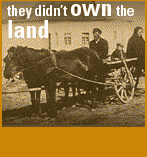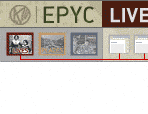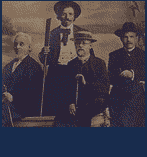


Because of the relative newness of medieval Eastern European cities, Jews and other outsiders had ample opportunity to make an impact on urban economies; Jews were also likely to form large minorities early on in many city's development.
The typical medieval Polish city was founded between the 13th and 17th centuries and resembled older German cities further west: built along a major river for ease of transportation and water supply, with the town forming around a major castle housing the royal representative or local feudal lord. Most cities were walled-in, with a central market square, cathedral, shops, clusters of houses, and crooked streets paved in stone. If the town was royal, municipal buildings also graced its streets and defined its character.
In pre-industrial times, Jews were severely restricted to specific quarters of cities, often barred outright from living (or working) inside the city walls. Jews were then compelled to seek the fickle protection of enterprising nobles in the hinterlands - nobles delighted to profit from Jewish industry, rent, and taxation. In more recent times, segregation was still a fact of city life, but it had grown to be enforced less by official law than by unspoken covenant. By choice or by default, Jews congregated within Jewish areas. Once the technology of streetcars and railroads arrived in the 1800s, Jews (and non-Jews, of course) had a good deal more choice of where to live and work.
Jewish settlers entered a broad array of occupations, necessarily depending on restrictions enacted against them: had non-Jewish guilds - fearing competition - forced Jews out of the trades? Arriving as merchants and financial middlemen, Jews branched out considerably as they staked claims to cities and marketplaces: crafts and trades (builders, tailors, smiths, brewers, bakers), professions (doctors, lawyers, engineers), and so on.
And, in each city, as Jews gained a foothold and some level of economic stability, community-leaders gathered resources to establish a familiar network of Jewish institutions: cemetery, synagogue, mikveh (ritual bath), schools: khedorim for children, yeshivot (schools) for selected, older students, later on, after secular education developed at the turn of the 20th century, gymnasiums (high schools), and a kehillah (communal government, that encompassed welfare organizations of different types). With a true, healthy minyan - a quorum of people - urban Jews were able to construct these many private organizations and sustain them through the levying of taxes by the able families. This amounted to a doubly-taxed existence but was absolutely necessary for the sake of cultural survival. Each physical institution embodied that sense of increasing permanence and prestige: from wooden to stone synagogues; from Talmud-Toyres (religious primary schools) in cramped storefront quarters to spacious school buildings of their own. With the growth of actual institutions and concrete manifestations of the culture, the effervescence of Jewish life permeated the streets of the town.
Nevertheless, those institutions and, in fact, that mode of Jewish life encountered enormous challenges in the 19th century. The industrialization of Europe proved to be a major turning point for shtot and shtetl alike, with a massive overhaul of the way people lived, worked, and organized themselves. Economic woes, over-crowding, and social dislocation led millions of Jews, beginning in the late-19th century, to migrate to larger cities, leaving the older spread out shtetlakh for the more promising cities. Many even opted to leave Eastern Europe altogether in favor of burgeoning Jewish immigrant communities in the United States, Latin America, and Palestine.




